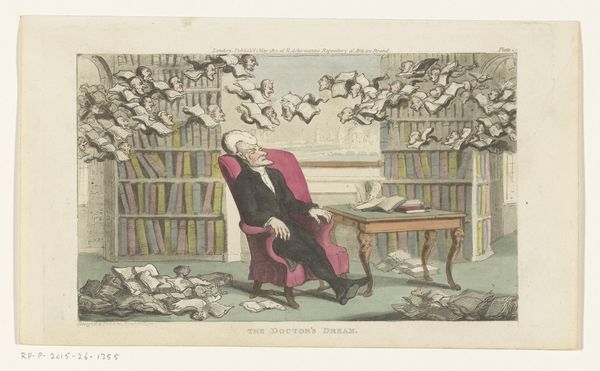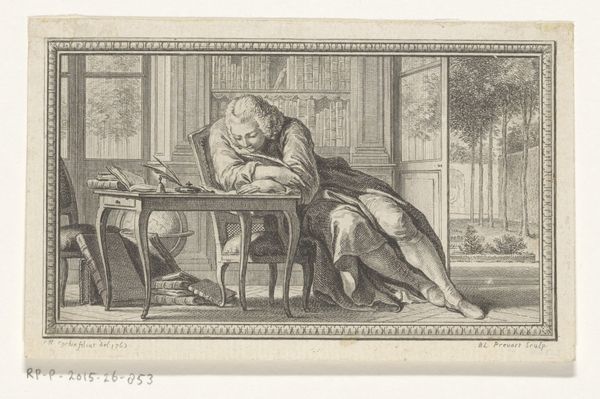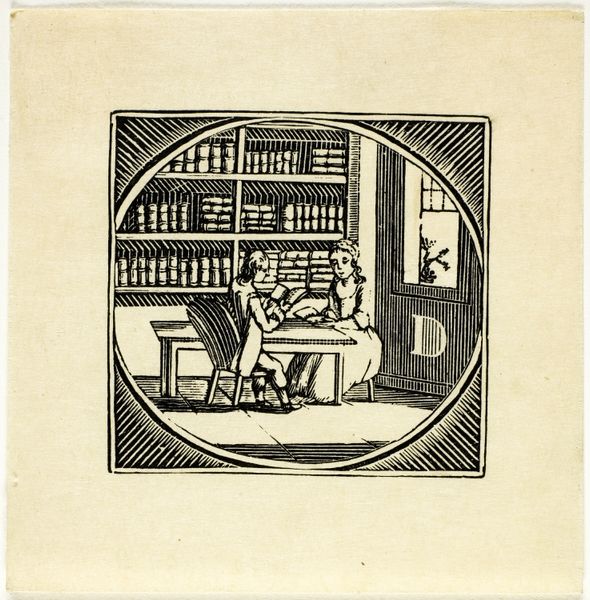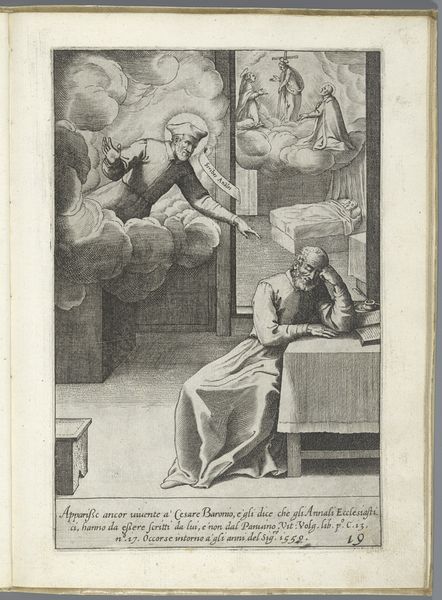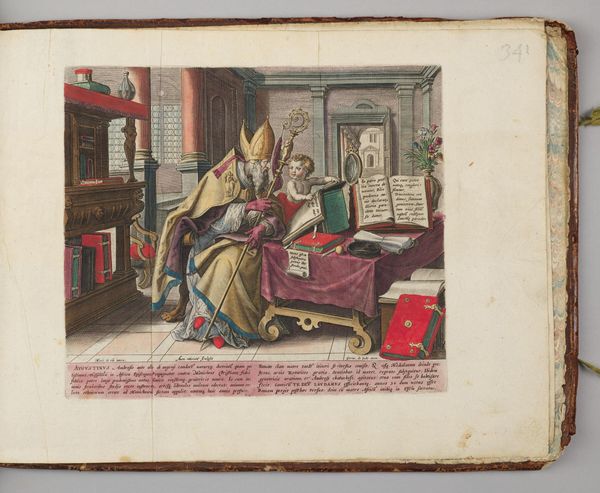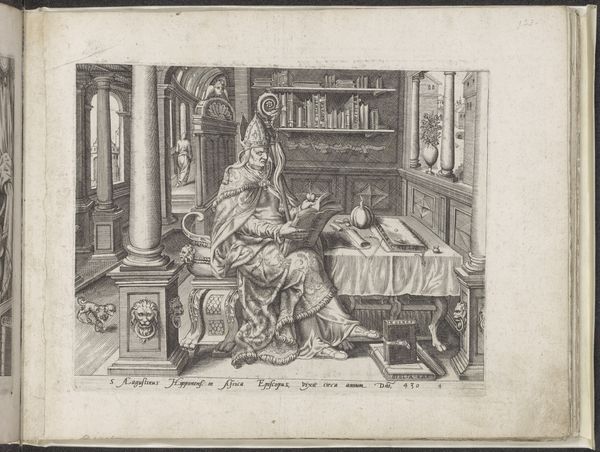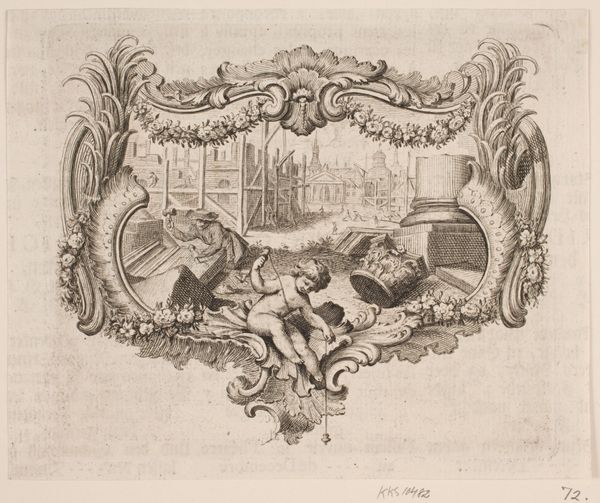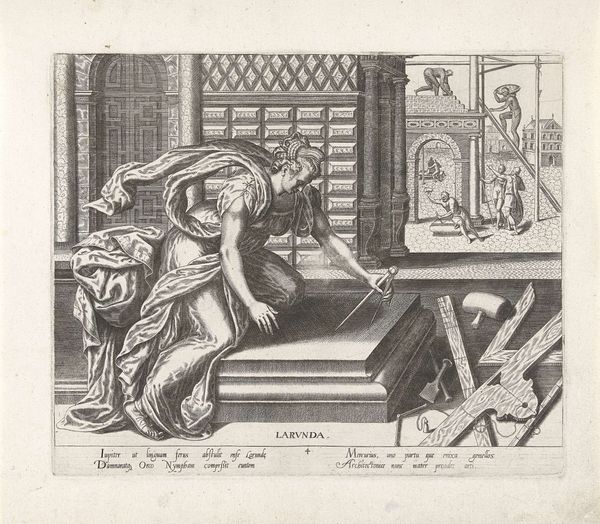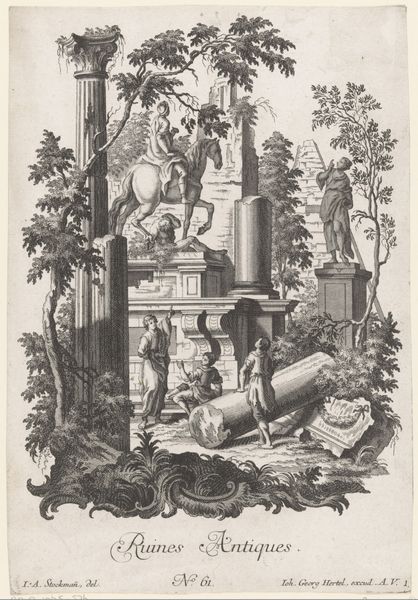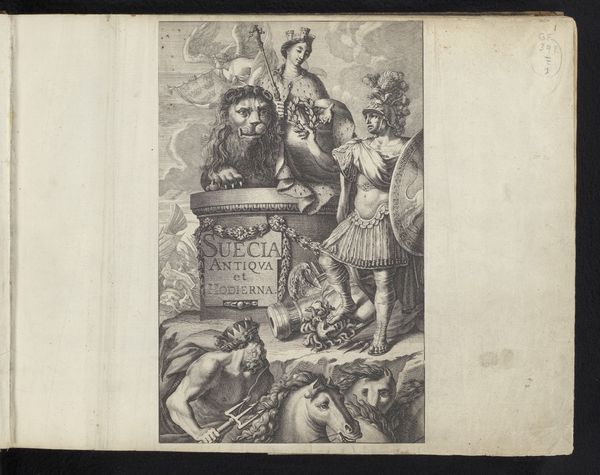
Dimensions: 4 3/4 x 7 1/4 in. (12.07 x 18.42 cm) (sheet)
Copyright: Public Domain
Curator: Looking at this hand-colored etching titled "The Doctor's Dream," created around 1815 by Thomas Rowlandson, I’m struck by its potent blend of satire and Romantic sensibilities. It just oozes 19th-century social commentary. Editor: Whoa, what a mood. It's dreamy in a weird, bookish, slightly unsettling way. The doctor looks utterly exhausted but, like, pleasantly so? The etching style feels both intricate and a bit chaotic. Is he surrounded by angels or what are those things floating in the air? Curator: Precisely. The figures hovering are interpretations of thoughts and the text contained in open books and works which float towards the somnambulant subject of the painting, with dream visions. Consider the layers within this seeming caricature. The placement in a book-lined study suggests the Enlightenment ideals of rationality and knowledge, however those cherubic figures can be interpreted as thoughts but also as a burden, literally and figuratively, weighing on the doctor. The figures lying on the floor made up by books and appearing to sleep, echo his own posture, the ideas are no longer engaging them. How do we situate that exhaustion within broader systems of power? The pressures and expectation inherent in being "learned". Editor: Yeah, totally see it. He's drowning in information, literally, with the supine subjects on the ground under the weight of so many texts. That backdrop outside the window in which sits the Pantheon is subtle. There's almost a humorous discomfort here, a battle between high ideals and everyday reality and fatigue. Is this a Romantic image? The style seems... too direct for that term somehow. Curator: The image definitely partakes of Romanticism’s fascination with interiority and the psychological impact of modernity while adopting strategies we might call, from a more contemporary understanding of art history, political. In a society rapidly changing due to industrialization and new class structures, medicine and "knowing" shifted positions. Editor: Hmm, never thought about it that way. I think maybe I was drawn to the aquatint for that precise quality, that simultaneous respect for, and poking fun at learning and progress and… the weight of knowing. The lines are scratchy, as if a fast take and capture with pen to paper...or plate to acid! It seems so, I don't know, immediate somehow. Curator: Indeed. Its brilliance lies, perhaps, in capturing that tension with such seeming casualness. We find a society on the brink reflected in a doctor overwhelmed by its demands, mirrored, with sharp strokes and the softest watercolours, forever in an artist's, our dream. Editor: So the dream becomes our shared inquiry, it looks like, after all. Beautiful.
Comments
No comments
Be the first to comment and join the conversation on the ultimate creative platform.
